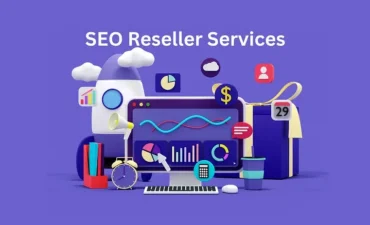In the vast digital landscape, social media has emerged as a ubiquitous presence, permeating every aspect of our lives. From connecting with friends and family to discovering new products and services, it has revolutionized the way we interact and consume. As businesses scramble to capitalize on this immense potential, one question looms large: How much do social media ads cost? In an era where marketing budgets are scrutinized meticulously, understanding the financial implications of advertising on platforms like Facebook and Instagram becomes paramount. So let’s delve into the world of social media advertising costs, unraveling its intricacies and shedding light on what it takes to reach your target audience in this ever-evolving virtual realm.
Different Pricing Models For Social Media Ads
- One of the most popular pricing models for social media ads is the cost-per-click (CPC) model. In this model, advertisers only pay when someone clicks on their ad. This can be a great option for businesses looking to drive traffic to their website or increase brand awareness. However, it’s important to note that not all clicks will result in conversions, so it’s crucial to closely monitor the performance of your CPC campaigns to ensure you’re getting a good return on investment.
- Another common pricing model is cost-per-thousand impressions (CPM). With this model, advertisers pay based on the number of times their ad is displayed, regardless of whether or not users actually click on it. CPM can be a good choice for businesses focused on increasing visibility and reach, as it allows them to get more eyeballs on their ads without worrying about clicks. However, it’s worth noting that CPM campaigns may not always result in direct conversions, so setting clear goals and tracking metrics such as engagement and brand lift are essential.
- Apart from CPC and CPM, another interesting pricing model gaining popularity is cost-per-engagement (CPE). This model charges advertisers only when users interact with their ads by liking, commenting, sharing, or clicking through them. CPE can be an effective way for brands to gauge audience interest and measure campaign success beyond just click-throughs or impressions.
Average Cost Of Social Media Ads On Popular Platforms
When it comes to social media advertising, understanding the average cost of ads on popular platforms can give businesses an edge in budgeting and planning their marketing strategies. While there are varying factors that contribute to ad costs, such as audience targeting and ad types, having a general idea can help guide businesses in making informed decisions.
Facebook remains one of the most powerful advertising platforms with over 2.8 billion monthly active users. On average, businesses can expect to pay around $0.97 per click for Facebook ads. However, it’s important to note that costs vary significantly depending on factors like industry competitiveness and audience targeting preferences.
Instagram is another popular platform for advertising, especially for brands looking to target a younger demographic. The average cost per click on Instagram ads ranges from $0.50 to $1.00 depending on factors such as location and competition within specific niches. Additionally, Instagram offers various ad formats like photo carousel ads or video ads which might impact overall costs.
LinkedIn, generally known as a professional networking site, has become increasingly attractive for business-to-business (B2B) advertisers due to its highly targeted audience and robust ad targeting capabilities. Building awareness through LinkedIn Sponsored Content Ads may come at an average cost of approximately $6-$9 per click.
Understanding the average costs associated with social media advertising across popular platforms is essential for businesses seeking optimal results from their marketing investments.

Tips for Optimizing Your Social Media Ad Budget
- One effective tip for optimizing your social media ad budget is to focus on targeting a specific audience. Instead of trying to reach as many people as possible, it’s more cost-effective to narrow down your target audience based on demographics, interests, and behaviors. This allows you to tailor your ads and messaging to a specific group of people who are more likely to be interested in your product or service.
- Another useful strategy is to continually monitor and analyze the performance of your social media ads. By tracking key metrics such as click-through rates, engagement rates, and conversions, you can identify what is working and what isn’t. This data-driven approach will enable you to make adjustments in real-time, ensuring that you are getting the most out of your ad spend.
- Furthermore, consider using retargeting techniques on social media platforms. This involves showing targeted ads specifically to users who have previously interacted with your brand or website without converting. Retargeting can be an effective way to remind potential customers about your products or services and drive them towards conversion.
By implementing these tips for optimizing your social media ad budget, you can maximize the ROI of each dollar spent on advertising while reaching the right audience with compelling content.
Conclusion:
In today’s digital world, allocating your advertising budget wisely is crucial for any business to thrive. With social media ads becoming an increasingly popular choice, it’s important to consider how best to maximize your investment. One approach is to diversify your campaigns across multiple platforms and target specific audience segments. While Facebook may be the go-to platform for many businesses, don’t overlook the potential of other platforms like Instagram, Twitter, or LinkedIn. Each offers its own unique set of users and ad options that can help you reach a wider range of potential customers.
Another key consideration when optimizing your advertising dollars is analyzing campaign performance regularly. Social media platforms provide detailed analytics that allow you to track impressions, click-through rates, conversions, and more. By monitoring these metrics closely, you can identify what’s working and what’s not, allowing you to make data-driven adjustments for better results over time.
Furthermore, focusing on creating engaging content that resonates with your target audience can significantly enhance the effectiveness of your social media ads. Rather than simply promoting products or services directly, try incorporating storytelling techniques or showcasing user-generated content to connect with potential customers on a deeper level. By fostering authentic interactions and building meaningful relationships online through thoughtful content creation, businesses have the opportunity to not only attract new customers but also foster long-term loyalty in an increasingly competitive landscape.
Remember that harnessing the power of social media advertising requires ongoing experimentation along with consistent monitoring and refinement.








